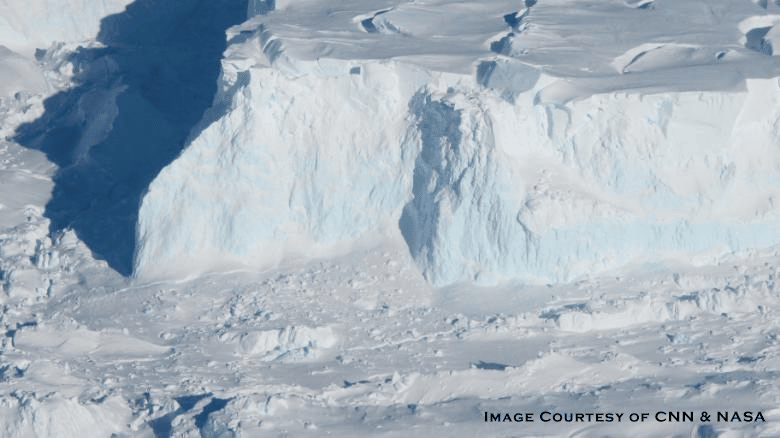Antarctica’s so-called “doomsday glacier”, nicknamed because of its high risk of collapse and threat to global sea level, has the potential to rapidly retreat in the coming years, scientists say, amplifying concerns over the extreme sea level rise that would accompany its potential demise. The Thwaites Glacier, capable of raising sea level by several feet, is eroding along its underwater base as the planet warms.

The Thwaites Glacier, located in West Antarctica, is one of the widest on Earth and is larger than the state of Florida. But it’s just a faction of the West Antarctic ice sheet, which holds enough ice to raise sea level by up to 16 feet, according to NASA. As the climate crisis has accelerated, this region has been closely monitored because of its rapid melting and its capacity for widespread coastal destruction.
The Thwaites Glacier itself has concerned scientists for decades. As early as 1973, researchers questioned whether it was at high risk of collapse. Nearly a decade later, they found that, because the glacier is grounded to a seabed, rather than to dry land, warm ocean currents could melt the glacier from underneath, causing it to destabilize from below.
The Environmental Protection Agency states that the “largest source of greenhouse gas emissions from human activities in the United States is from burning fossil fuels for electricity, heat, and transportation.” Carbonfund offers a variety of ways for individuals to offset their carbon emissions. People can choose a lifestyle offset for blanket coverage or other options that are available including offsetting the carbon emissions released only by your vehicle. There are different offset choices depending on your car’s fuel efficiency. You may also offset your air travel in order to lower your flying footprint. Just simply choose the amount of miles you are looking to neutralize. Home offsets are also offered depending on the square footage of your house.
The clearing and burning of forests accounts for about 20% of global greenhouse gas emissions. The Environmental Defense Fund believes that “slowing or stopping deforestation is a near-term, cost-effective option for significantly reducing global emissions.” The EPA estimates that carbon dioxide makes up about 81% of all greenhouse gas emissions. Carbonfund.org has spent the last decade investing and developing more than 750,000 acres in the Brazilian Amazon Rainforest that are helping in the fight against climate change. The Envira Amazonia Project, the Purus Project and the Russas-Valparaiso Projects have reduced over 16 million metric tonnes of carbon dioxide equivalent emissions in their first 10 years of operation. By mitigating greenhouse gas emissions, these projects help to combat climate change while also having many other social and environmental benefits. Carbonfund has planted over 1.6 million trees worldwide.
Be a leader in the fight against climate change and support our industry-leading carbon reduction projects today!
